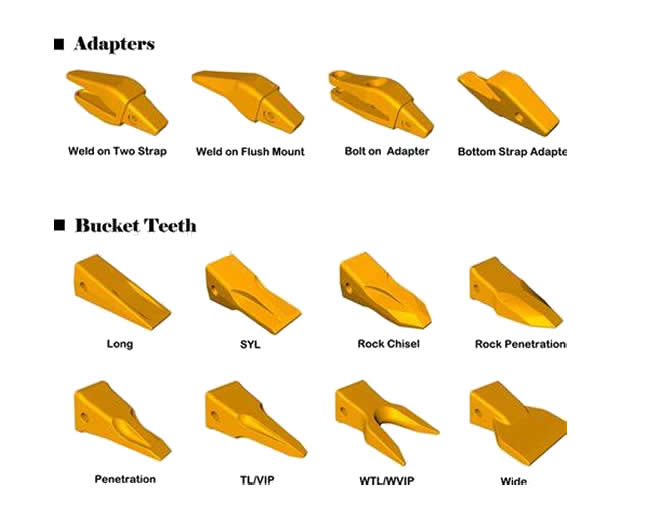Therefore, many machine friends want to find bucket teeth that pass the process, quality, and wear resistance. This saves the cost of replacement on the one hand, and saves a lot of replacement time on the other hand. The following editor will give you a detailed introduction on how to select bucket teeth from the aspects of process, material, pores and physical comparison.
Process manufacturing:
At present, the best technology on the market is forging bucket teeth. Because of the high density of forging technology, bucket teeth not only have high hardness but also have very good wear resistance. Of course, the price is also a lot more expensive.
The ordinary casting process is clearly distinguished from the forging process bucket teeth in terms of price. Of course, the feedback also has obvious differences in details such as the wear resistance and hardness of the bucket teeth.
Stoma
When a knowledgeable old driver first buys a bucket tooth of a certain brand or manufacturer, he will conduct detailed observation and inspection, even cutting. By observing the pores after cutting, you can tell whether the quality of the bucket tooth is too hard.
The pores of castings are generally divided into separating pores, intrusive pores and reverberating pores, and the formation of shrinkage cavities and shrinkage porosity in castings is mostly accompanied by the separation of gas. The pores, shrinkage cavities and shrinkage porosity can be said to be associated .
To put it simply, bucket teeth processed with good technology and material have very few pores, and you will not see large, spherical or group-shaped pores after cutting. On the contrary, bucket teeth with general manufacturing technology and material.
Real picture comparison
Let's make a physical comparison. First, we will select the ones with good craftsmanship, ordinary craftsmanship and slightly worse craftsmanship from the three bucket teeth sold on the market, and we will introduce them in detail:
High quality: high surface gloss, smooth touch
Normal: There are bumpy particles on the touch, and the gloss is slightly poor
Inferior quality: obvious frosted graininess, thick paint
Tooth tip thickness: The tip of high-quality bucket teeth will have a significant thickness difference than that of inferior models, which is why ordinary bucket teeth wear out after a period of time.
Bucket tooth weight: According to the weighing point of view, the weight of inferior bucket teeth is the highest, followed by high-quality models, and the lightest is the ordinary model. It can be seen that although bucket teeth are distinguished by weight to a certain extent, they are not Not 100% accurate! Therefore, when some manufacturers use bucket tooth weight as a gimmick, everyone should pay special attention.
Tooth replacement cycle
The construction environment of an excavator directly determines the degree of wear of the bucket teeth and the frequency of replacement. For example, if the excavator is doing earthwork or sandy soil engineering, it is almost the same as replacing it twice a year, because the degree of wear will be much smaller.
However, if it is a quarry or rock project, the replacement cycle will be much shorter, especially for granite and other hard stones. It is commonplace to replace it once a week. Therefore, the quality of the teeth, the operation method and the construction environment determine the teeth. Replacement time.
All in all, understanding the manufacturing process of bucket teeth, observing the number of pores on the cutting surface of the bucket teeth, as well as the weight and other details, can judge whether the quality of the bucket teeth is satisfactory. Have you learned?
Post time: Oct-31-2023




